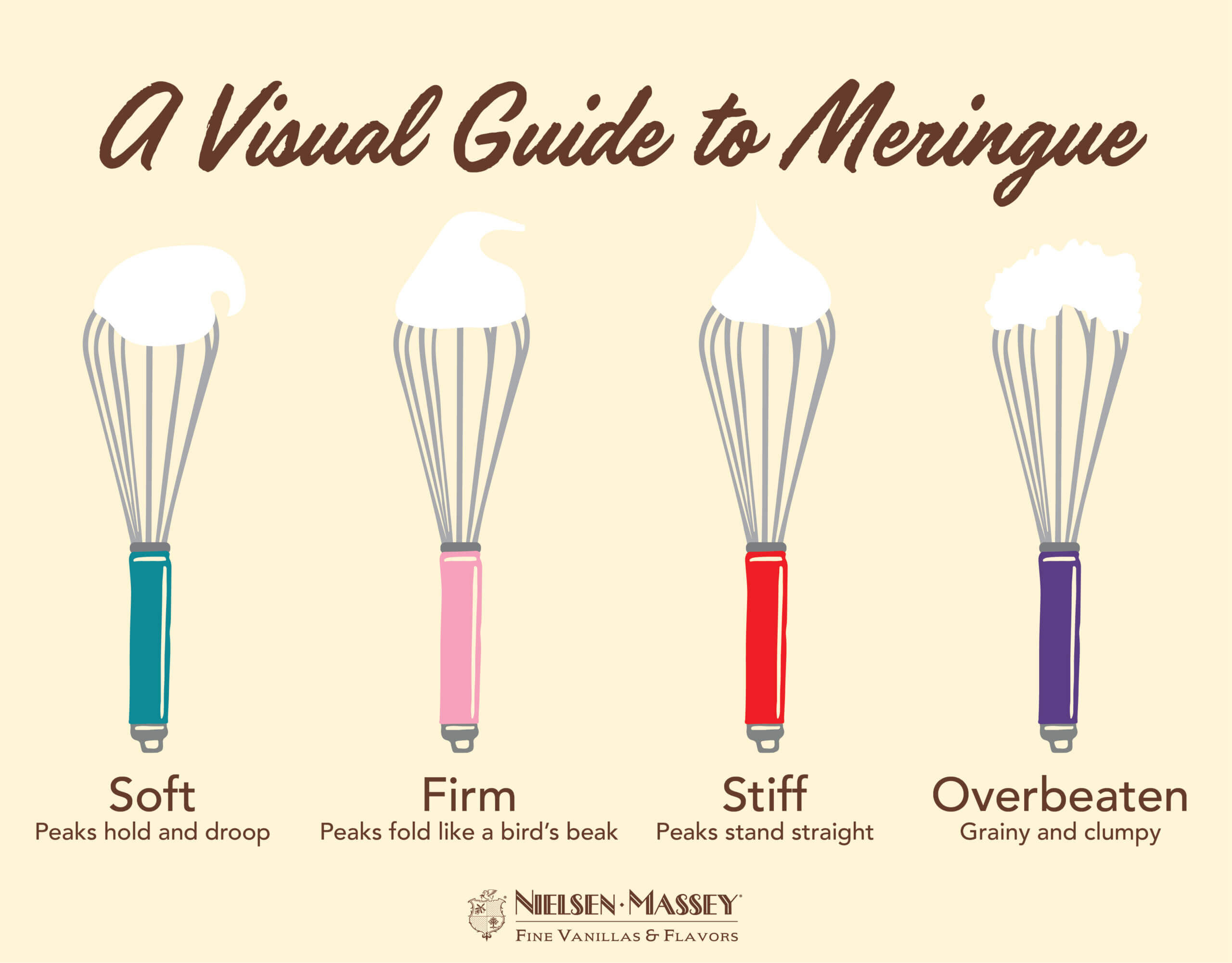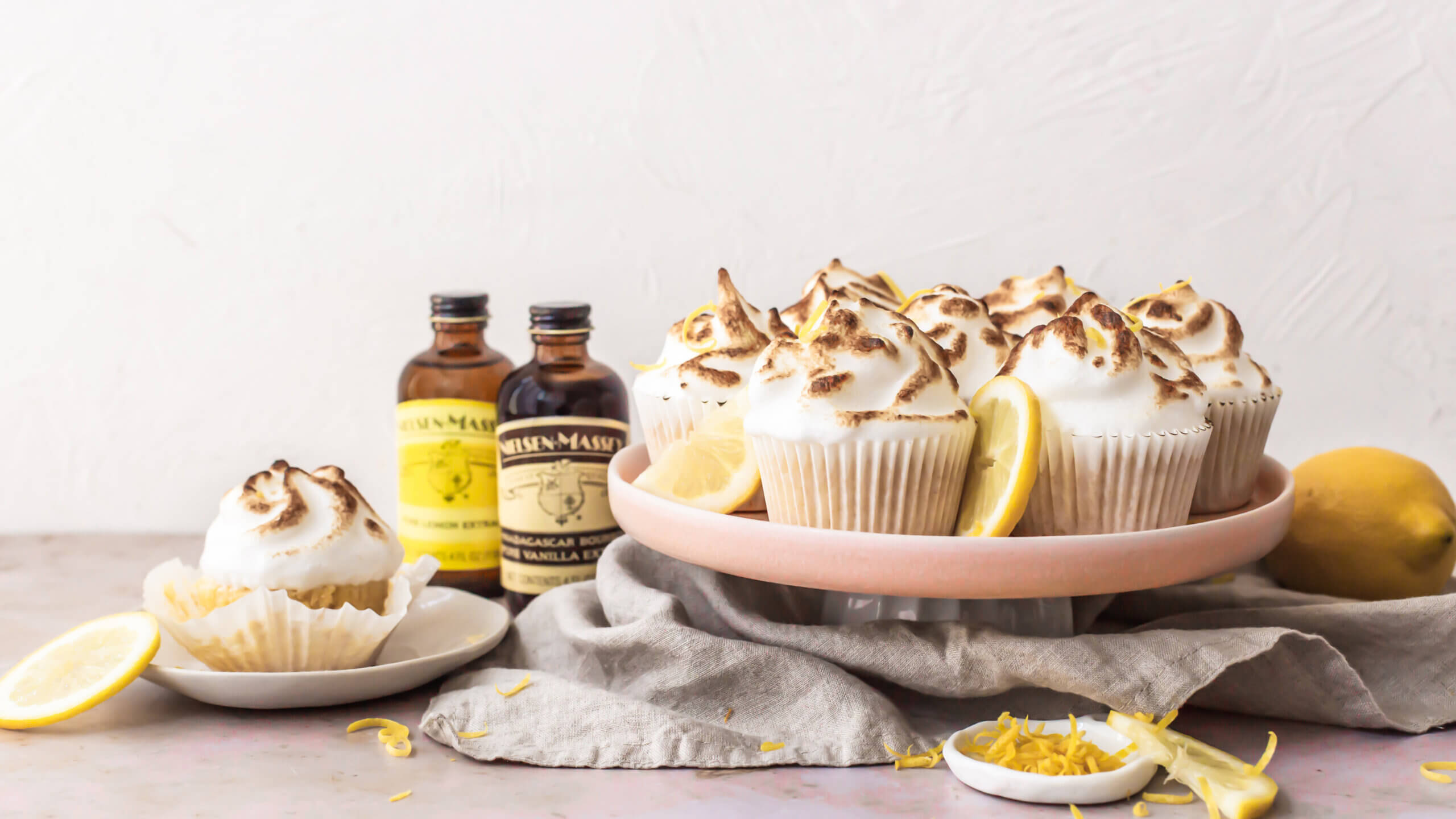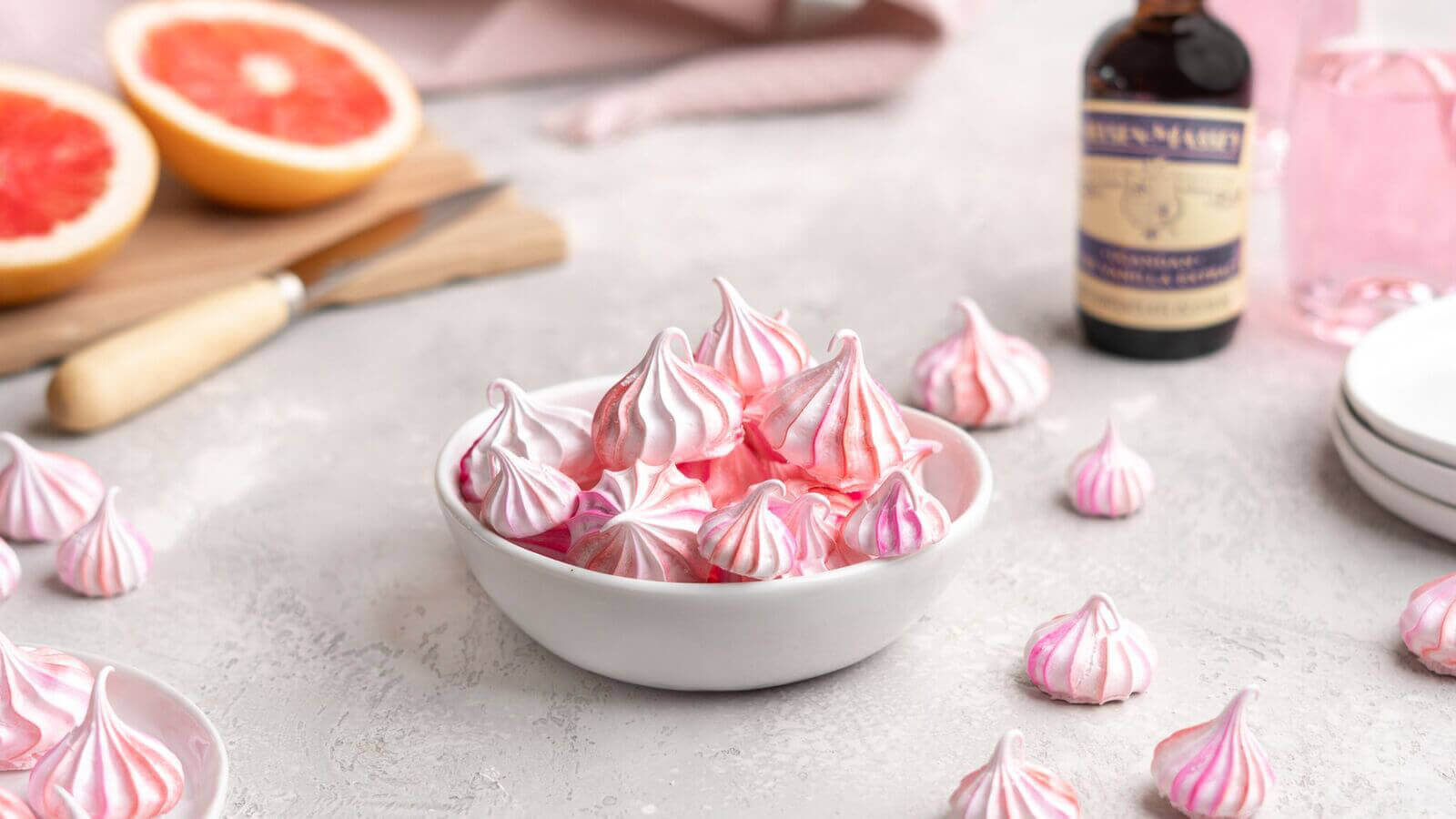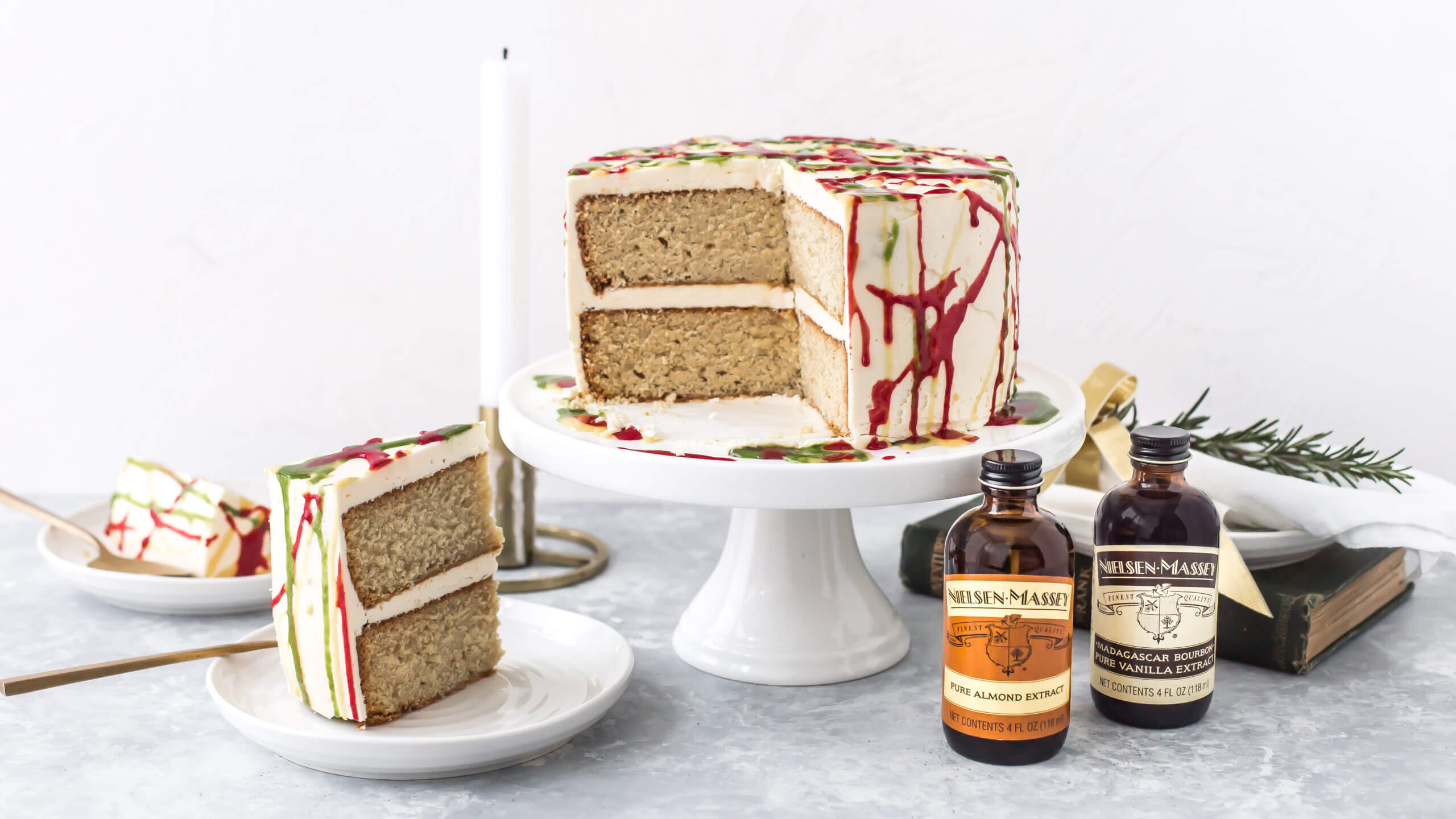Meringue 101
Meringue is a common inclusion in many dessert recipes, from buttercreams and cakes to pies and cookies. In addition to being a sweet component of your recipe, meringue adds volume and airiness to your baked goods. With our handy guide below, you can learn the ins and outs of meringue and find inspiration for your next baking adventure.
What is meringue?
Meringue is made from just two main ingredients: egg whites and sugar. Ingredients such as cream of tartar and lemon juice are also commonly added to increase stability and help the meringue keep its volume.
To make a meringue, you have to whisk the egg whites by hand or a mixer to introduce air and increase volume. You then add sugar slowly, so the crystals can dissolve without crushing the air out. The sugar dissolves in the water present in the egg whites and stabilizes the egg white proteins, helping your meringue to hold its shape and fluffiness as you fold it into batters or pipe it as a topping.
How do I determine peak stiffness?
When making a recipe that includes meringue, you’ll notice that it often calls for a certain level of stiffness. To achieve a great final product, it’s important to whisk your meringue to the correct stiffness level. Under- or over-whisking meringue can affect the texture of your baked good, causing it to be too dense.

There are three stages of meringue stiffness: soft, firm and stiff peaks. As you keep whipping your egg whites, the peaks will transition from soft to firm to stiff. It’s important to pause your mixing to check your peak stiffness level if you’re unsure how far along your meringue is. Dip your whisk straight into the meringue, then pull it out and flip upside down so the whisk is fully vertical to observe the peak.
Which meringue do I use?
There are three types of meringues, each made with different techniques. Depending on what you’re baking, you may choose to use one meringue over another for a better texture and shape in the final product.
French meringue has the lightest texture and is the least stable of meringues. French meringue is made by whisking together raw egg whites, a small amount of acid such as lemon juice or cream of tartar, and granulated sugar until it forms stiff peaks. Due to its instability, it’s most prone to “weeping” and needs to be baked. You can fold French meringue into cake batters and souffles, or use it to pipe meringue cookies.
Swiss meringue is denser and more stable than French meringue, with a silky consistency. It is made by whisking sugar and egg whites in a double boiler, or a bowl over simmering water, until the sugar dissolves. It is then taken off the heat and whisked until it doubles in volume. This meringue is often used for buttercream frostings or as a topping for pies and tarts.

Italian Meringue
Italian meringue is the most stable meringue with a dense, marshmallow-like texture. It is made by whisking together egg whites and a sugar syrup heated to 235-245°F (113-118°C). The sugar syrup is slowly poured into the egg whites while whisking, resulting in a shiny, voluminous meringue. Like Swiss meringue, Italian meringue is also great for making buttercreams, as well as frosting cakes, creating mousse or piping onto tarts and pies. Because it is very stable and holds its shape well, it’s also a popular choice for cookies and macarons.
How long can I store meringue?
In general, meringue should be used immediately after making it, so you are using it at optimal volume. If you must prep in advance, follow this rule of thumb: the more stable the meringue, the earlier you can make it ahead of time.
French meringue is the least stable and should be used right away, or it will deflate and “weep,” or lose its water content. Swiss meringue can be made up to a day in advance and stored in the fridge in an airtight container. Similarly, Italian meringue can be made up to two days in advance and stored in the fridge in an airtight container.
After incorporating your meringue into a recipe, it can last anywhere from a few days up to a few weeks.
- Pies: French meringue pies will last a day or two in the fridge before showing signs of weeping. Swiss and Italian meringue pies will keep for longer.
- Buttercream Frostings: Due to a higher sugar and fat content, Swiss and Italian Meringue buttercreams will keep at room temperature for about two days or a few weeks in the refrigerator. Meringue buttercreams also freeze well. Simply thaw to room temperature and re-whip until it is smooth before using.
- Cookies: Meringue cookies will keep for about two weeks in an airtight container at room temperature.
What are some tips & tricks for better meringue?
- Separate your egg whites when they are cold, but then warm them to room temperature to ensure a fluffy meringue.
- Be sure there are no traces of egg yolk in the whites, or they will not reach full volume.
- Use a clean bowl, without any leftover grease or fat, or your egg whites may not foam.
- Make your meringue on non-humid days to create stiff, stable peaks.
- When folding meringue into a batter, gently fold until just combined, or you’ll lose volume in your recipe.
We hope this guide helps you navigate your next meringue creation. Tag us @NielsenMassey or use #BetterYourBake to show us what you’re whisking up.


